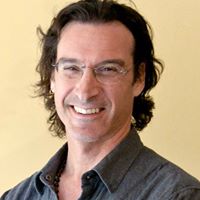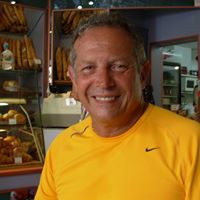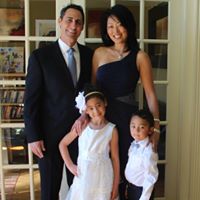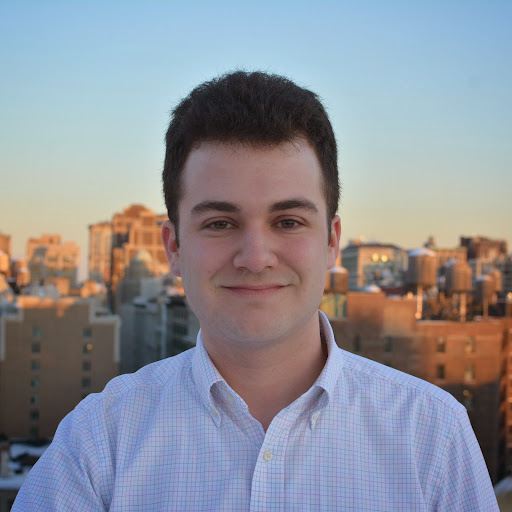Jeffrey E Grossman
age ~77
from Santa Cruz, CA
- Also known as:
-
- Jeffrey Edward Grossman
- Jeffery E Grossman
- Jeff Grossman
Jeffrey Grossman Phones & Addresses
- Santa Cruz, CA
- Oakland, CA
- San Francisco, CA
- Berkeley, CA
- Long Island City, NY
- New York, NY
- Capitola, CA
Lawyers & Attorneys

Jeffrey Samuel Grossman, New York NY - Lawyer
view sourceAddress:
New York, NY 10014
2122292162 (Office)
2122292162 (Office)
Licenses:
New York - Currently registered 1998
Education:
Emory Univ

Jeffrey Donald Grossman, Tenafly NJ - Lawyer
view sourceAddress:
71 Downey Dr, Tenafly, NJ 07670
Licenses:
New York - Currently registered 1994
Education:
St Johns University

Jeffrey O. Grossman, New York NY - Lawyer
view sourceAddress:
Aol Inc.
770 Broadway Fl 4, New York, NY 10003
2122064400 (Office)
770 Broadway Fl 4, New York, NY 10003
2122064400 (Office)
Licenses:
New York - Currently registered 1998
Education:
New York University School of Law

Jeffrey Grossman - Lawyer
view sourceOffice:
Stradley Ronon Stevens & Young, LLP
Specialties:
Construction
Securities Litigation
Products Liability and Mass Tort
Professional Liability
Insurance
Fidelity and Surety
Litigation
Securities Litigation
Products Liability and Mass Tort
Professional Liability
Insurance
Fidelity and Surety
Litigation
ISLN:
910548579
Admitted:
1994
University:
St Johns University; Binghamton University, B.A., 1993
Law School:
Dickinson School of Law of the Pennsylvania State University, J.D., 1996

Jeffrey Grossman - Lawyer
view sourceOffice:
Jeffrey C. Grossman
ISLN:
906843916
Admitted:
1973
University:
University of Pennsylvania, B.A., 1970
Law School:
Fordham University, J.D., 1973

Jeffrey O. Grossman, Esq., Manhasset NY - Lawyer
view sourceOffice:
CMP Media, LLC
600 Community Drive, 4Th Floor, Manhasset, NY
600 Community Drive, 4Th Floor, Manhasset, NY
Responsibilities:
Litigation
ISLN:
912414056
Admitted:
1997
University:
State University of New York at Binghamton, B.A.
Law School:
New York University, J.D.
Name / Title
Company / Classification
Phones & Addresses
Law Clerk
Hogan & Hartson L.L.P.
875 3 Ave FL 25, New York, NY 10022
2129183000, 2129183100
2129183000, 2129183100
AGFY LLC
CLINTON STREET BUYERS CORP
C/O N Nierman 199 Clinton St #3, Brooklyn, NY 11201
199 Clinton St #2, Brooklyn, NY 11201
199 Clinton St #2, Brooklyn, NY 11201
Owner
Jeffrey L Grossman
Commodity Contract Broker
Commodity Contract Broker
1 Whitehall St, New York, NY 10004
Vice-President
Abbott Industries Inc
Mfg Wood Products Mfg Wood Partitions/Fixt Mfg Plastic Products Mfg Nonwd Partition/Fixt
Mfg Wood Products Mfg Wood Partitions/Fixt Mfg Plastic Products Mfg Nonwd Partition/Fixt
9525 149 St, Jamaica, NY 11435
7182910800
7182910800
Vice-President
Loroman Co Inc
Whol Furniture · Custom Furniture
Whol Furniture · Custom Furniture
9525 149 St, Jamaica, NY 11435
7182910800
7182910800
President
SEEWISDOM TECHNOLOGIES, INC
4240 Hollis St STE 362, Emeryville, CA 94608
President, Director
HARBOR DENTAL MANAGEMENT SERVICES, INC
1900 University Ave, Palo Alto, CA 94303
101 Philippe Pkwy #303, Safety Harbor, FL 34695
101 Philippe Pkwy #303, Safety Harbor, FL 34695
Resumes

Property Manager
view sourceLocation:
211 13Th Ave, Santa Cruz, CA 95062
Industry:
Motion Pictures And Film
Work:
No Company
property manager
property manager
Education:
Rutgers University (American Studies) Columbia University (MFA) Creative Writing (poetry)
Columbia Univesity, Creative writing (poetry)
Columbia Univesity, Creative writing (poetry)
Languages:
English

Jeffrey Grossman
view source
Jeffrey Grossman
view source
Jeffrey Grossman Weston, FL
view sourceWork:
DHL Express
2003 to 2000
Senior Operations Manager Secured Transport Corporation
Huntington, NY
1996 to 2003
Transportation Manager
2003 to 2000
Senior Operations Manager Secured Transport Corporation
Huntington, NY
1996 to 2003
Transportation Manager
Education:
St John's University
Queens, NY
1989
Bachelor of Science in Finance
Queens, NY
1989
Bachelor of Science in Finance

Jeffrey Grossman Woodbury, NY
view sourceWork:
B.R.G. Brokerage, Inc
Sep 1992 to 2000
Futures and Options Broker Geldermann, Inc
N.Y., N.Y., US
May 1991 to Aug 1992
Options Broker Grossman Enterprises
N.Y., N.Y., US
Nov 1980 to Apr 1991
Independent Floor Broker NYMEX Broker Training Committee
1983 to 1988
Chairman Gardisette, Inc
Anderson, SC
Dec 1977 to Nov 1980
Regional Sales Manager - Textiles D.N.S. Audio, Inc
Bronx, NY
Jan 1976 to Dec 1977
Manager, Audio Products Todd Chemical Co
Great Neck, NY
Jun 1975 to Jan 1976
Account Executive
Sep 1992 to 2000
Futures and Options Broker Geldermann, Inc
N.Y., N.Y., US
May 1991 to Aug 1992
Options Broker Grossman Enterprises
N.Y., N.Y., US
Nov 1980 to Apr 1991
Independent Floor Broker NYMEX Broker Training Committee
1983 to 1988
Chairman Gardisette, Inc
Anderson, SC
Dec 1977 to Nov 1980
Regional Sales Manager - Textiles D.N.S. Audio, Inc
Bronx, NY
Jan 1976 to Dec 1977
Manager, Audio Products Todd Chemical Co
Great Neck, NY
Jun 1975 to Jan 1976
Account Executive
Education:
Albany State University
1975
Bachelor of Science in Chemistry
1975
Bachelor of Science in Chemistry
Isbn (Books And Publications)

Diagnostic and Surgical Imaging Anatomy: Musculoskeletal, International Edition
view sourceAuthor
Jeffrey W. Grossman
ISBN #
1931884323
License Records
Jeffrey Grossman
Phone:
9056688674
License #:
13079 - Active
Category:
Health Care
Issued Date:
Jul 6, 1992
Effective Date:
Jan 5, 2016
Expiration Date:
Feb 28, 2018
Type:
Dental
Medicine Doctors

Jeffrey M. Grossman
view sourceSpecialties:
Internal Medicine
Work:
Jeffrey M Grossman MD
920 37 Pl STE 103, Vero Beach, FL 32960
7722994046 (phone), 7722990419 (fax)
920 37 Pl STE 103, Vero Beach, FL 32960
7722994046 (phone), 7722990419 (fax)
Education:
Medical School
Medical College of Georgia School of Medicine
Graduated: 1986
Medical College of Georgia School of Medicine
Graduated: 1986
Procedures:
Vaccine Administration
Electrocardiogram (EKG or ECG)
Electrocardiogram (EKG or ECG)
Conditions:
Abdominal Hernia
Acute Sinusitis
Acute Upper Respiratory Tract Infections
Angina Pectoris
Benign Prostatic Hypertrophy
Acute Sinusitis
Acute Upper Respiratory Tract Infections
Angina Pectoris
Benign Prostatic Hypertrophy
Languages:
English
Description:
Dr. Grossman graduated from the Medical College of Georgia School of Medicine in 1986. He works in Vero Beach, FL and specializes in Internal Medicine. Dr. Grossman is affiliated with Indian River Medical Center.

Jeffrey S. Grossman
view sourceSpecialties:
Physical Medicine & Rehabilitation
Work:
Peachtree Spine Physicians
5555 Peachtree Dunwoody Rd STE G65, Atlanta, GA 30342
4048433323 (phone), 4045745944 (fax)
Peachtree Spine Physicians
711 Canton Rd NE STE 200, Marietta, GA 30060
4048433323 (phone), 4045745944 (fax)
5555 Peachtree Dunwoody Rd STE G65, Atlanta, GA 30342
4048433323 (phone), 4045745944 (fax)
Peachtree Spine Physicians
711 Canton Rd NE STE 200, Marietta, GA 30060
4048433323 (phone), 4045745944 (fax)
Education:
Medical School
Emory University School of Medicine
Graduated: 1997
Emory University School of Medicine
Graduated: 1997
Procedures:
Neurological Testing
Languages:
Chinese
English
Spanish
English
Spanish
Description:
Dr. Grossman graduated from the Emory University School of Medicine in 1997. He works in Atlanta, GA and 1 other location and specializes in Physical Medicine & Rehabilitation.

Jeffrey W. Grossman
view sourceSpecialties:
Radiology
Work:
Treasure Valley Imaging
8800 W Emerald St, Boise, ID 83704
2083735012 (phone), 2083735031 (fax)
8800 W Emerald St, Boise, ID 83704
2083735012 (phone), 2083735031 (fax)
Education:
Medical School
University of Texas Medical Branch at Galveston
Graduated: 2002
University of Texas Medical Branch at Galveston
Graduated: 2002
Languages:
English
Description:
Dr. Grossman graduated from the University of Texas Medical Branch at Galveston in 2002. He works in Boise, ID and specializes in Radiology. Dr. Grossman is affiliated with Treasure Valley Hospital.

Jeffrey F. Grossman
view sourceSpecialties:
Anesthesiology
Work:
Billings ClinicBillings Anesthesiology PC
2800 10 Ave N, Billings, MT 59101
4062483290 (phone), 4062483346 (fax)
2800 10 Ave N, Billings, MT 59101
4062483290 (phone), 4062483346 (fax)
Languages:
English
Description:
Dr. Grossman works in Billings, MT and specializes in Anesthesiology. Dr. Grossman is affiliated with Billings Clinic Hospital.

Jeffrey Wayne Grossman
view sourceSpecialties:
Radiology
Diagnostic Radiology
Pulmonary Disease
Diagnostic Radiology
Pulmonary Disease
Wikipedia References

Jeffrey Grossman
Us Patents
-
Carbon Based Thirty Six Atom Spheres
view source -
US Patent:6939524, Sep 6, 2005
-
Filed:Mar 3, 2000
-
Appl. No.:09/518989
-
Inventors:Charles R. Piskoti - Fenton MI, US
Alex K. Zettl - Kensington CA, US
Marvin L. Cohen - Piedmont CA, US
Michel Cote - Cambridge, GB
Jeffrey C. Grossman - Berkeley CA, US
Steven G. Louie - Berkeley CA, US -
Assignee:The Regents of the University of California - Oakland CA
-
International Classification:C01B031/00
-
US Classification:423445B, 977DIG 1
-
Abstract:A solid phase or form of carbon is based on fullerenes with thirty six carbon atoms (C). The Cstructure with Dsymmetry is one of the two most energetically favorable, and is conducive to forming a periodic system. The lowest energy crystal is a highly bonded network of hexagonal planes of Csubunits with AB stacking. The Csolid is not a purely van der Waals solid, but has covalent-like bonding, leading to a solid with enhanced structural rigidity. The solid Cmaterial is made by synthesizing and selecting out Cfullerenes in relatively large quantities. A Crich fullerene soot is produced in a helium environment arc discharge chamber by operating at an optimum helium pressure (400 torr). The Cis separated from the soot by a two step process. The soot is first treated with a first solvent, e. g. toluene, to remove the higher order fullerenes but leave the C.
-
Tunable Multiwalled Nanotube Resonator
view source -
US Patent:7915973, Mar 29, 2011
-
Filed:Aug 25, 2006
-
Appl. No.:11/467422
-
Inventors:Alex K. Zettl - Kensington CA, US
Kenneth J. Jensen - Berkeley CA, US
Caglar Girit - Albany CA, US
William E. Mickelson - San Francisco CA, US
Jeffrey C. Grossman - Berkeley CA, US -
Assignee:The Regents of the University of California - Oakland CA
-
International Classification:H03H 9/24
-
US Classification:333186, 333197, 977752
-
Abstract:A tunable nanoscale resonator has potential applications in precise mass, force, position, and frequency measurement. One embodiment of this device consists of a specially prepared multiwalled carbon nanotube (MWNT) suspended between a metal electrode and a mobile, piezoelectrically controlled contact. By harnessing a unique telescoping ability of MWNTs, one may controllably slide an inner nanotube core from its outer nanotube casing, effectively changing its length and thereby changing the tuning of its resonance frequency. Resonant energy transfer may be used with a nanoresonator to detect molecules at a specific target oscillation frequency, without the use of a chemical label, to provide label-free chemical species detection.
-
Nanomechanical Resonance Detector
view source -
US Patent:8567249, Oct 29, 2013
-
Filed:Aug 18, 2009
-
Appl. No.:12/543359
-
Inventors:Jeffrey C. Grossman - Berkeley CA, US
Alexander K. Zettl - Kensington CA, US -
Assignee:The Regents of the University of California - Oakland CA
-
International Classification:G01H 13/00
-
US Classification:73579, 977902
-
Abstract:An embodiment of a nanomechanical frequency detector includes a support structure and a plurality of elongated nanostructures coupled to the support structure. Each of the elongated nanostructures has a particular resonant frequency. The plurality of elongated nanostructures has a range of resonant frequencies. An embodiment of a method of identifying an object includes introducing the object to the nanomechanical resonance detector. A resonant response by at least one of the elongated nanostructures of the nanomechanical resonance detector indicates a vibrational mode of the object. An embodiment of a method of identifying a molecular species of the present invention includes introducing the molecular species to the nanomechanical resonance detector. A resonant response by at least one of the elongated nanostructures of the nanomechanical resonance detector indicates a vibrational mode of the molecular species.
-
Tunable Multiwalled Nanotube Resonator
view source -
US Patent:8573031, Nov 5, 2013
-
Filed:Feb 11, 2011
-
Appl. No.:13/026122
-
Inventors:Kenneth J. Jensen - Berkeley CA, US
Caglar O. Girit - Saint Cloud, FR
William E. Mickelson - San Francisco CA, US
Alexander K. Zettl - Kensington CA, US
Jeffrey C. Grossman - Brookline MA, US -
Assignee:The Regents of the University of California - Oakland CA
-
International Classification:G01H 13/00
G01N 29/02 -
US Classification:73 2406, 73 2401, 977957
-
Abstract:A tunable nanoscale resonator has potential applications in precise mass, force, position, and frequency measurement. One embodiment of this device consists of a specially prepared multiwalled carbon nanotube (MWNT) suspended between a metal electrode and a mobile, piezoelectrically controlled contact. By harnessing a unique telescoping ability of MWNTs, one may controllably slide an inner nanotube core from its outer nanotube casing, effectively changing its length and thereby changing the tuning of its resonance frequency. Resonant energy transfer may be used with a nanoresonator to detect molecules at a specific target oscillation frequency, without the use of a chemical label, to provide label-free chemical species detection.
-
System And Method For Performing Compound Vector Operations
view source -
US Patent:61923842, Feb 20, 2001
-
Filed:Sep 14, 1998
-
Appl. No.:9/152763
-
Inventors:William J. Dally - Stanford CA
Scott Whitney Rixner - Mountain View CA
Jeffrey P. Grossman - Cambridge MA
Christopher James Buehler - Cambridge MA -
Assignee:The Board of Trustees of the Leland Stanford Junior University - Stanford CA
The Massachusetts Institute of Technology - Cambridge MA -
International Classification:G06F 928
-
US Classification:708200
-
Abstract:A processor particularly useful in multimedia applications such as image processing is based on a stream programming model and has a tiered storage architecture to minimize global bandwidth requirements. The processor has a stream register file through which the processor's functional units transfer streams to execute processor operations. Load and store instructions transfer streams between the stream register file and a stream memory; send and receive instructions transfer streams between stream register files of different processors; and operate instructions pass streams between the stream register file and computational kernels. Each of the computational kernels is capable of performing compound vector operations. A compound vector operation performs a sequence of arithmetic operations on data read from the stream register file, i. e. , a global storage resource, and generates a result that is written back to the stream register file.
-
Secure Content Messaging
view source -
US Patent:20160164854, Jun 9, 2016
-
Filed:Feb 3, 2016
-
Appl. No.:15/015108
-
Inventors:- New York NY, US
Tom Dixon - New York NY, US
Rob Figueiredo - New York NY, US
Rich Hong - New York NY, US
Jeffrey Grossman - New York NY, US -
International Classification:H04L 29/06
G06F 17/30
H04L 12/58
G06F 21/62 -
Abstract:Systems and methods are disclosed for secure messaging and content sharing. In one implementation, a processor receives a content item in a first format, the content item being associated with an intended recipient, converts the content item into a second format, provides the content item, as converted into the second format, to a device associated with the intended recipient, receives, from the device associated with the intended recipient, one or more inputs in relation to a segment of the content item, processes the one or more inputs to determine that an authentication action is being performed with respect to the segment of the content item, and based on a determination that the authentication action is being performed with respect to the segment of the content item, provides an instruction to present the segment of the content item at the device associated with the intended recipient.
-
Retractable Aerodynamic Structures For Cargo Bodies And Methods Of Controlling Positioning Of The Same
view source -
US Patent:20160077529, Mar 17, 2016
-
Filed:Aug 19, 2015
-
Appl. No.:14/830114
-
Inventors:- Hayward CA, US
Riccardo M. Pagliarella - San Francisco CA, US
Court S. Hinricher - San Francisco CA, US
Jeffrey J. Grossman - San Francisco CA, US
Jared A. Niemiec - Belmont CA, US
Michael W. Polidori - Hayward CA, US -
International Classification:G05D 3/00
B62D 35/00 -
Abstract:A system that has electrically or electro-pneumatically actuated aerodynamic structures. An electric or electro-pneumatic actuator is employed, which receives signals from an existing anti-lock braking system (ABS) controller to determine when actuation occurs. Other systems are also provided that feature electric or electro-pneumatic actuation, including underbody skirts and scoops, as well as inflatable tractor-trailer gap sealing devices, adjustable tractor-trailer gap sealing flaps and inflatable trailer upper streamlining devices. Electronic control units (ECUs) for aerodynamic system control interfacing with alternate sensors for calculating speed are also provided. Satellite navigation, platooning awareness and managed pressure reserve capability can be employed with the aerodynamics ECU.
-
Secure Messaging
view source -
US Patent:20150082391, Mar 19, 2015
-
Filed:Sep 17, 2014
-
Appl. No.:14/489309
-
Inventors:- New York NY, US
Tom Dixon - New York NY, US
Rob Figueiredo - New York NY, US
Rich Hong - New York NY, US
Jeffrey Grossman - New York NY, US -
International Classification:H04L 29/06
H04L 12/58 -
US Classification:726 4
-
Abstract:Systems and methods are disclosed for secure messaging and content sharing. In one implementation, a processor receives a message associated with a recipient, provides, to the recipient, a notification pertaining to the message, and, based on a determination of a performance of one or more authentication actions with respect to the message, provides the recipient with access to the message. In another implementation, a processor receives a message including one or more content segments, receives inputs in relation to at least one of the content segments, processes the inputs to determine that an authentication action is being performed with respect to the one of the one or more content segments, and based on a determination that the authentication action is being performed with respect to the one of the one or more content segments, presents the at least one of the one or more content segments.

Jeffrey Grossman
view source
Jeffrey Grossman
view source
Jeffrey Grossman
view source
Jeffrey Grossman
view sourceFriends:
Barbara Pillius Elste, Rick Smith, Ron L Deal, Matthew Kass

Jeffrey Grossman
view sourceFriends:
Rich Rosenthal, Brad Baruch Roter, Randy Stern, Susan Rubens, Keith Gallant

Jeffrey H. Grossman
view source
Jeffrey Grossman Atlanta...
view sourceFriends:
Sami Robinson, Julia Horst, William Hoffman, Tracie Militano

Jeffrey R. Grossman
view sourceGoogleplus

Jeffrey Grossman
Education:
Carnegie Mellon University - Computer Science

Jeffrey Grossman

Jeffrey Grossman
Work:
Wells Motor Company - Business Manager (2006)
Education:
Rutgers University - Animal Physiology & Anatomy, Cornell University - Biology, New Rochelle High Achool - College Prep

Jeffrey Grossman
Flickr
Plaxo

Jeffrey Grossman
view sourceNYC

Jeffrey S. Grossman
view sourceChesterfield, MO
Myspace
Classmates

Jeffrey Grossman
view sourceSchools:
Lancaster Country Day School Lancaster PA 1977-1981
Community:
Linda Jones, Doug Graybill, John Chandler

Jeffrey Grossman
view sourceSchools:
Ridge High School Basking Ridge NJ 1986-1990
Community:
Jacquelin Fahey, John Cushing, Gretchen Decoste

Jeffrey Grossman
view sourceSchools:
Northwood High School Minong WI 1976-1976
Community:
Kent Same, Anna Jokinen

Jeffrey Grossman
view sourceSchools:
Greenwich Country Day School Greenwich CT 1981-1985
Community:
Michael Polke

Jeffrey Robert Grossman
view sourceSchools:
Mamaroneck High School Mamaroneck NY 1987-1991
Community:
George Grant

Jeffrey Grossman
view sourceSchools:
St. Clare School Bronx NY 1981-1985
Community:
Virginia Schaefer, Jana Vatiqi, Karen Delcasale, Patrick Ahearn, Lisa Soli, Helen Dipierro, Clara Dipierro, Bernadette Lombardo, Craig Horn, Angelo Sedacca, Stephen Demartino

Jeffrey Grossman
view sourceSchools:
Wilmington Friends High School Wilmington DE 1967-1971
Community:
Cape Ranken, Luther Latten, John Hall

Jeffrey Grossman
view sourceSchools:
St. Raymond Boys High School Bronx NY 1985-1989
Community:
William Mussumeli
News

Google quietly working on a replacement for Android, called Fuchsia, that's causing some fierce internal squabbling
view source- Switching away from Android could provide Google the opportunity to hit the reset button on any mistakes they believe they made a decade ago, said Jeffrey Grossman, co-founder of messaging app Confide. They might be able to regain some power that theyve ceded to device manufacturers and telecom
- Date: Jul 19, 2018
- Category: Headlines
- Source: Google

Major Advance Towards Practical Application of Solid-State Energy-Storage/Heat ...
view source- The finding, by MIT professor Jeffrey Grossman, postdoc David Zhitomirsky, and graduate student Eugene Cho, is described in a paper in the journal Advanced Energy Materials. The key to enabling long-term, stable storage of solar heat, the team says, is to store it in the form of a chemical change ra
- Date: Jan 11, 2016
- Category: Sci/Tech
- Source: Google

PV Goes 3-D
view source- Two small-scale versions of 3-D photovoltaic arrays were among those tested by Jeffrey Grossman and his team on an MIT rooftop to measure their actual electrical output throughout the day. (Image: Allegra Boverman)
- Date: Mar 28, 2012
- Category: Sci/Tech
- Source: Google

MIT's 3D solar cells take cubism to new energy efficient heights
view source- "I think this concept could become an important part of the future of photovoltaics," says the paper's senior author, Jeffrey Grossman, the Carl Richard Soderberg Career Development Associate Professor of Power Engineering at MIT.
- Date: Mar 28, 2012
- Category: Sci/Tech
- Source: Google
Youtube
Get Report for Jeffrey E Grossman from Santa Cruz, CA, age ~77















